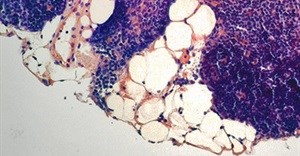Adolescents who were abused and neglected have less grey matter in some areas of the brain than young people who have not been maltreated, a new Yale School of Medicine study shows.
The brain areas impacted by maltreatment may differ between boys and girls, may depend on whether the youths had been exposed to abuse or neglect, and may be linked to whether the neglect was physical or emotional.
The results, published in the 5 December 2011 issue of the Archives of Pediatric Adolescent Medicine, show that 42 adolescent subjects who reported being either abused or neglected show a reduction in grey matter - the tissue containing brain cells - even though they had not been diagnosed with a psychiatric disorder.
"Here we have teenagers who may not have a diagnosable illness but still have physical evidence of maltreatment," said Hilary Blumberg, associate professor in the Departments of Psychiatry and Diagnostic Radiology and in the Yale Child Study Center, who is senior author of the study. "This could help to explain their trouble with school performance or increase their vulnerability to depression and behavioral difficulties."
The reduction of grey matter was seen in prefrontal areas, no matter whether the adolescent had been physically abused or emotionally neglected. However, in other areas of the brain the reductions depended upon the type of maltreatment the youth had experienced. For example, emotional neglect was associated with decreases in areas that regulate emotions.
The researchers also found gender differences in patterns of grey matter decreases. In boys, the reduction tended to be concentrated in areas of the brain associated with impulse control or substance abuse. In girls, the reduction seemed to be in areas of the brain linked to depression.
Blumberg stressed these deficits found in adolescents are likely not to be permanent.
"We have found that the brain, particularly in adolescents, shows a great deal of plasticity," she said. "It is critical to find ways to prevent maltreatment and to help the youths who have been exposed."
The research was funded by: the National Institutes of Health (National Institute of Drug Abuse, National Institute of Mental Health) and its Roadmap for Medical Research Common Fund, the National Alliance for Research in Schizophrenia and Depression, the Klingenstein Foundation, Women's Health Research at Yale and the Attias Family Foundation.
Other Yale affiliated authors include Erin E. Edmiston (now of Vanderbilt University), Fei Wang, Carolyn M. Mazure, Joanne Guiney, Rajita Sinha and Linda C. Mayes.

















